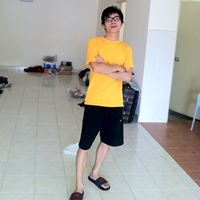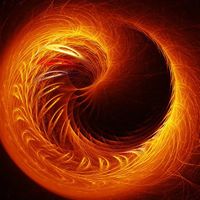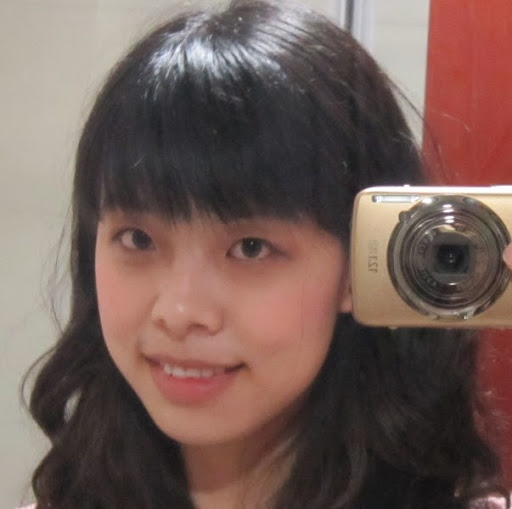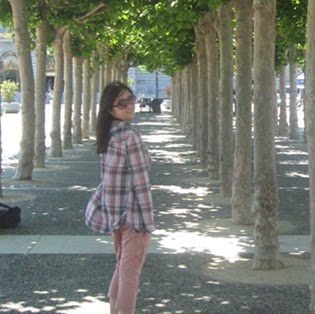Qi I Wu
age ~56
from Painted Post, NY
Qi Wu Phones & Addresses
- 9 Tara Pl, Painted Post, NY 14870 • 6079626486
- Eatontown, NJ
- 126 Middle Rd, Dublin, PA 18917 • 2152499791
- Troy, NY
- Corning, NY
Isbn (Books And Publications)


Us Patents
-
Method And Apparatus For Trimming The Optical Path Length Of Optical Fiber Components
view source -
US Patent:6356681, Mar 12, 2002
-
Filed:Jul 9, 1999
-
Appl. No.:09/350750
-
Inventors:Gang Chen - Horseheads NY
Qi Wu - Painted Post NY -
Assignee:Corning Incorporated - Corning NY
-
International Classification:G02B 634
-
US Classification:385 37, 385 10, 385 24, 385123, 385140, 372102, 359130
-
Abstract:The method and apparatus of the present invention achieves the trimming and, therefore, tuning of fiber optic devices by, in on embodiment, precisely heating a small area of a fiber to allow its elongation when mounted under tension in its package. By pulsing a source of heat in precise amounts, the elongation can be precisely controlled within 1 picometer precision over a tuning range of about 200 picometers. In another embodiment with fibers having core dopants which can be diffused, the optical length of an optical fiber can be trimmed with nanometer precision. By employing a controlled source of localized energy applied to the optical fiber, real time trimming can be achieved in both systems by injecting a broad band source of energy at the input of the device and coupling a spectral analyzer at its output to monitor the frequency characteristic of the optical device during trimming. In a preferred embodiment, the energy source comprised a CO laser having a relatively narrow beam corresponding to the diameter of the optical fiber. Energy from the laser is directed to a small area of the optical fiber in pulses which provide precise control of the trimming process.
-
Tunable Periodic Filter
view source -
US Patent:6370286, Apr 9, 2002
-
Filed:Jul 16, 1999
-
Appl. No.:09/356217
-
Inventors:Mark F. Krol - Painted Post NY
Qi Wu - Painted Post NY -
Assignee:Corning Incorporated - Corning NY
-
International Classification:G02B 600
-
US Classification:385 11, 385 24, 359484, 359494
-
Abstract:A polarization-interferometry based tunable periodic filter includes polarization defining components such as polarizing beam splitters or polarizing beam displacers located on the input and output sides of a phase retarder such as a birefringent crystal. A polarization independent input consisting of multiple optical channels having a periodic frequency spacing is converted to a branched output of optical channels in which each branch has a periodic frequency spacing that is different from that of the input, and which are interleaved with each other. The output period is tunable by adjusting the phase delay of orthogonal polarization components. A contrast ratio of 20 dB can be realized. The device allows the mux/demux of up to 200 WDM channels with a 50 GHz frequency spacing. Applications of the device include a band splitter, a wavelength selective cross-connect, and a wavelength monitor.
-
Balanced Gain Flattening Filters
view source -
US Patent:6445493, Sep 3, 2002
-
Filed:Oct 25, 1999
-
Appl. No.:09/426051
-
Inventors:Glenn E. Kohnke - Painted Post NY
Qi Wu - Painted Post NY -
Assignee:Corning Incorporated - Corning NY
-
International Classification:H01S 300
-
US Classification:3593371, 3593411, 359161, 3593372
-
Abstract:Compound gain flattening filters of optical amplification include a series of filter components with spectral responses that are combined to approach a target loss spectrum. Small variations in the central wavelengths of the component responses can produce large errors in the combined response of the compound gain flattening filter. However, the components can be divided into sub-components with balanced central wavelength deviations to achieve the desired response goals despite exhibiting otherwise detrimental wavelength deviations.
-
Fused Fiber Interleaver
view source -
US Patent:6735365, May 11, 2004
-
Filed:Apr 16, 2002
-
Appl. No.:10/124624
-
Inventors:Joel P. Carberry - Horseheads NY
Qi Wu - Eatontown NJ -
Assignee:Corning, Incorporated - Corning NY
-
International Classification:G02B 626
-
US Classification:385 39, 385 43, 385 48
-
Abstract:In accordance with an exemplary embodiment of the present invention, an optical interleaver/deinterleaver includes a substrate having at least one window therein. The interleaver/deinterleaver further includes a first optical waveguide and a second optical fiber, which are disposed over a substrate. The first and second optical waveguides are coupled together at at least two locations to form optical couplers at each of the locations. The first optical waveguide has a first length between the two locations, and the second optical waveguide has a second length between the two locations wherein the first length is smaller than the second length. Illustratively, the first optical waveguide is disposed over the window, so that the window is along the first length of the first optical fiber. In accordance with another exemplary embodiment of the present invention, a method of interleaving/deinterleaving optical signals includes providing a first optical waveguide and a second optical waveguide, which is coupled to the first optical fiber at at least two locations. The method further includes adjusting a length of the second optical waveguide to coarsely adjust channel separation, and applying laser energy to the first optical waveguide to finely adjust the channel separation.
-
Optical Interleaver
view source -
US Patent:6956988, Oct 18, 2005
-
Filed:Mar 28, 2002
-
Appl. No.:10/112624
-
Inventors:Jaymin Amin - Corning NY, US
Mark F. Krol - Painted Post NY, US
Qi Wu - Eatontown NJ, US -
Assignee:Avanex Corporation - Fremont CA
-
International Classification:G02B006/28
G02B006/293
G02B005/30 -
US Classification:385 24, 385 11, 359484, 359494
-
Abstract:In accordance with an exemplary embodiment of the present invention, an optical device includes a first element which decomposes said optical signal into a first beam and a second beam with the first beam being in a first polarization state and the second beam being in a second polarization state. The first and second polarization states being orthogonal to one another and including each of said multiple channels. The optical device further includes a second element which transforms the first beam into a first elliptically polarized state having odd channels in a third polarization state and even channels in a fourth polarization state having even channels in the third polarization state and odd channels in the fourth polarization state; and a third element which combines the odd channels into a first output port and the even channels into a second output port.
-
Optical Interleaver
view source -
US Patent:7257287, Aug 14, 2007
-
Filed:Oct 15, 2004
-
Appl. No.:10/967113
-
Inventors:Jaymin Amin - Corning NY, US
Mark F. Krol - Painted Post NY, US
Qi Wu - Eatontown NJ, US -
Assignee:Avanex Corporation - Fremont CA
-
International Classification:G02B 6/28
G02B 6/293
G02B 5/30 -
US Classification:385 24, 385 11, 359484, 359494
-
Abstract:In accordance with an exemplary embodiment of the present invention, an optical device includes an interleaver/deinterleaver, which includes a passive thermal compensator, wherein an optical signal which transverses the optical device undergoes substantially no temperature induced frequency drift over a desired temperature range.
-
Optimized Method For Lid Biosensor Resonance Detection
view source -
US Patent:7509239, Mar 24, 2009
-
Filed:Mar 9, 2007
-
Appl. No.:11/716425
-
Inventors:Jacques Gollier - Painted Post NY, US
Garrett A. Piech - Horseheads NY, US
Michael B. Webb - Lindley NY, US
Qi Wu - Painted Post NY, US -
Assignee:Corning Incorporated - Corning NY
-
International Classification:G03F 1/26
-
US Classification:702191
-
Abstract:An optical interrogation system is described herein that can interrogate a label-independent-detection (LID) biosensor and monitor a biological event on top of the biosensor without suffering from problematical parasitic reflections and/or problematical pixelation effects. In one embodiment, the optical interrogation system is capable of interrogating a biosensor and using a low pass filter algorithm to digitally remove problematic parasitic reflections contained in the spectrum of an optical resonance which makes it easier to determine whether or not a biological event occurred on the biosensor. In another embodiment, the optical interrogation system is capable of interrogating a biosensor and using an oversampling/smoothing algorithm to reduce oscillations in the estimated location of an optical resonance caused by the problematical pixelation effect which makes it easier to determine whether or not a biological event occurred on the biosensor.
-
Optical Interrogation System And Method For Using Same
view source -
US Patent:7576333, Aug 18, 2009
-
Filed:Aug 1, 2007
-
Appl. No.:11/888495
-
Inventors:Stephen J. Caracci - Elmira NY, US
Robert A. Modavis - Painted Post NY, US
David A. Pastel - Horseheads NY, US
Qi Wu - Painted Post NY, US -
Assignee:Corning Incorporated - Corning NY
-
International Classification:G01J 1/58
G01N 33/53
G01N 21/62
C12Q 1/04 -
US Classification:2504581, 2504591, 435 71, 435 34, 436171
-
Abstract:An optical interrogation system and a method are described herein that enable the interrogation of one or more biosensors which can be located within the wells of a microplate. In one embodiment, the optical interrogation system has a tunable laser, N-fiber launches, N-lenses and N-detectors that are set-up to interrogate N-biosensors. In another embodiment, the optical interrogation system has a tunable laser, N-fiber launches, N+1 lenses and N-detectors that are set-up to interrogate N-biosensors.
Name / Title
Company / Classification
Phones & Addresses
ORIENTAL PEARL RESTAURANT LLC
Resumes

Qi Chris Wu
view sourceLocation:
Painted Post, NY
Industry:
Research
Work:
Corning Incorporated
Research Scientist
Research Scientist

Qi Wu
view source
Carnage Middle School
view sourceWork:
United States
Carnage Middle School
Carnage Middle School

Advisor
view sourceWork:
Advisor

Qi Wu
view sourceWork:
Rensselaer Polytechnic Institute
Aug 2008 to Present
Research Assistant Xi'an Jiaotong University
Xi'an, China
Sep 2005 to Jul 2006
Research Assistant O2Micro
Santa Clara, CA
ASIC Designer
Aug 2008 to Present
Research Assistant Xi'an Jiaotong University
Xi'an, China
Sep 2005 to Jul 2006
Research Assistant O2Micro
Santa Clara, CA
ASIC Designer
Education:
Rensselaer Polytechnic Institute
Troy, NY
Jan 2008 to Jan 2012
Ph.D. in Electrical Engineering Xi'an Jiaotong University
Xi'an, China
Jan 2003 to Jan 2006
Master of Engineering in Electrical Engineering Xi'an Jiaotong University
Xi'an, China
Jan 1999 to Jan 2003
Bachelor in Electrical Engineering
Troy, NY
Jan 2008 to Jan 2012
Ph.D. in Electrical Engineering Xi'an Jiaotong University
Xi'an, China
Jan 2003 to Jan 2006
Master of Engineering in Electrical Engineering Xi'an Jiaotong University
Xi'an, China
Jan 1999 to Jan 2003
Bachelor in Electrical Engineering
Skills:
Programming Language: Verilog/VHDL, C/C++, Matlab, Perl, and Tcl. Tools: VCS, De- sign Compiler, PrimeTime, Formality, ModelSim, Cadance, Hspice, CustomExplorer, Synplify, Quartus, Protel, M5 full system simulator, HotSpot thermal simulator, and DiskSim disk simu- lator.

Qi Zhi Wu
view source
Qi Ming Wu
view source
Qi Wu
view source
Qi Qi Wu
view source
Qi Wu
view source
Qi Wu
view source
Yan Qi Wu
view source
Qi Wu
view sourceYoutube
Flickr
Myspace
Googleplus

Qi Wu
Education:
Wellesley College

Qi Wu
About:
Hi, my name is Qi Wu and I am a senior double majoring in Architecture and East Asia Language and Culture at the University of Southern California. I have done a lot of readings and researches in pas...

Qi Wu

Qi Wu

Qi Wu

Qi Wu

Qi Wu

Qi Wu
Get Report for Qi I Wu from Painted Post, NY, age ~56














